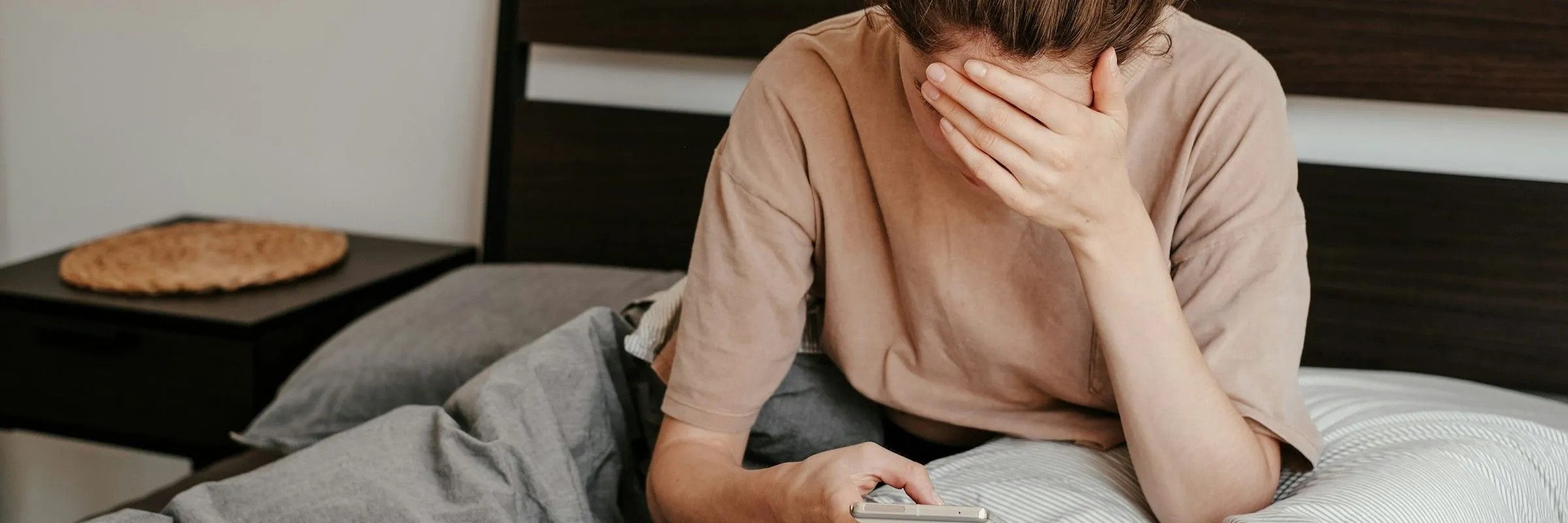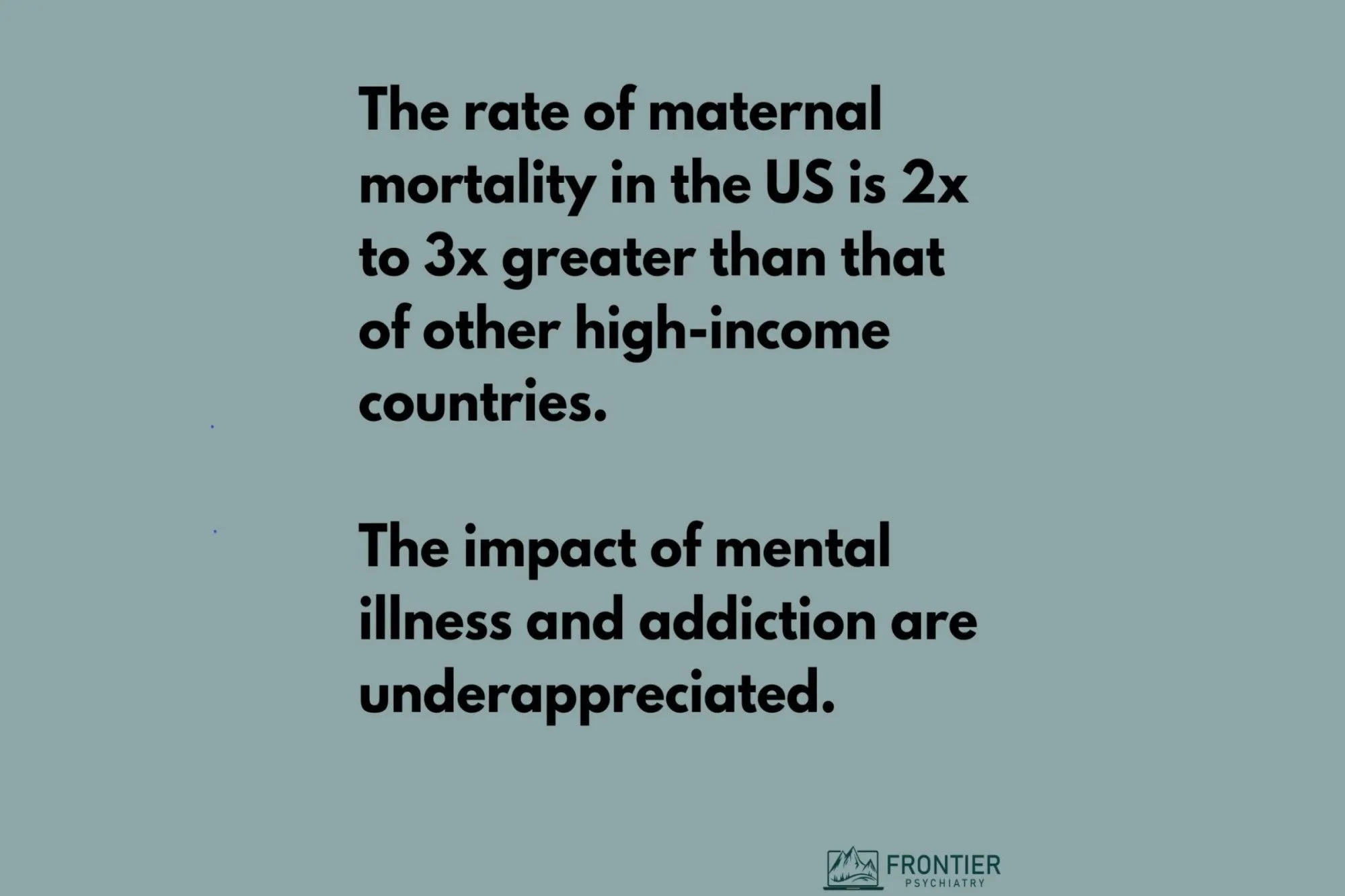Understanding Depression: Symptoms, Rural Access Solutions, and Pathways Forward
While feeling sad is a natural and healthy response to difficult situations, depression goes further and can significantly affect your daily life and overall happiness. Depression is a serious yet treatable mood disorder that touches the lives of millions globally. It is marked by a lasting low mood that continues for at least two weeks, often accompanied by other disruptive symptoms. If you live with depression, you may experience:(1)
- Loss of interest in activities
- Changes in sleep or appetite
- Overwhelming fatigue
- Difficulty concentrating
- A deep sense of worthlessness
To be clear, these are medical symptoms that require care, not character flaws as society has historically called them. Recognizing symptoms of depression in your own life is the crucial first step toward relief, but geographic isolation can complicate mental health support. Thankfully, with advancements in research, technology, and access, effective treatment is within reach.
Addressing Rural Mental Health Barriers
Living with depression in rural America presents unique challenges. In 2023, 22.7% of adults in nonmetropolitan areas reported experiencing mental health struggles,(3) yet accessing care in rural areas often means confronting four significant barriers:
- Distance: Many people face long drive times to reach the nearest clinics or specialists.
- Scarcity: Remote regions have a critical shortage of mental health providers.
- Cost: Uninsured or underinsured individuals face many unaffordable treatment options.
- Stigma: Stigma and shaming within tight-knit communities can discourage people from seeking help when friends, colleagues, and loved ones are uninformed about the realities of mental health.
To address the distance and scarcity barriers for those in remote areas or without accessible transportation, companies and individual mental health providers have increasingly begun to utilize what we now call telehealth. Telehealth services provide an effective, accessible solution to provider visits through secure video, messaging, or phone sessions. Over 43% of rural residents use these services, and Medicare covers a variety of virtual visit types nationwide, ensuring that geographical isolation does not limit access to care.(3)
With the help of telehealth, patients are now able to access therapists and psychiatry providers throughout their home state, eliminating distance barriers and widening the pool of specialties and availability for patients who may have previously faced a single provider option with long wait times in their hometown.
While telehealth effectively addresses many access challenges, effective care still requires that a patient or provider first identify the diverse presentations of depression. Recognizing your symptoms as potential depression can help start the process and guide targeted treatment approaches.
What are Common Symptoms of Depression?
Cleveland Clinic lists the following as general symptoms of depression, though it’s important to know that symptoms of depression can be vary widely based on severity and from person to person:
- Feeling very sad, hopeless or worried. Children and adolescents with depression may be irritable rather than sad.
- Not enjoying things that used to bring joy.
- Being easily irritated or frustrated.
- Eating too much or too little, which may result in weight gain or weight loss.
- Trouble sleeping (insomnia)(12)or sleeping too much (hypersomnia).(13)
- Having low energy or fatigue.
- Having a difficult time concentrating, making decisions or remembering things.
- Experiencing physical issues like headache, stomachache or sexual dysfunction.(14)
- Having thoughts of self-harm or suicide.(2)
What are the Different Types of Depression?
In the U.S., about 1 in 6 adults will experience depression at some point in their lives.(1) Depression can take many forms, and symptoms can vary widely from person to person. However, there are a few core types of depression:
- Major Depressive Disorder (MDD)/Clinical Depression: This condition is characterized by a persistently low mood or a lack of interest in almost all activities, lasting for at least two weeks. These symptoms can significantly interfere with daily life, reduce energy levels, negatively impact concentration, and cause overwhelming feelings when facing everyday tasks.(2)
- Persistent Depressive Disorder (PDD): This type involves a long-term pattern of low mood that lasts for at least two years. Although the symptoms are often less intense than those of MDD, they are chronic and can leave individuals feeling a constant emotional weight. This ongoing struggle can make it hard to feel joy, even when life seems to be going well on the surface.(2)
- Premenstrual Dysphoric Disorder (PMDD): PMDD aligns with the pre-menstruation timeline of PMS each month, but presents with severe additional mood symptoms like anxiety, anger, or depression.(2)
- Disruptive Mood Dysregulation Disorder (DMDD): Perhaps the least known of the depression categories, DMDD typically begins by age 10 and is marked by ongoing irritability and frequent outbursts in kids.(2)
- Depression can also occur as a symptom of other diagnosable health conditions. In these cases, depression symptoms can improve by treating the underlying health conditions.(2)
Specific forms of major depressive disorder depression include:(1),(2)
- Perinatal/Postpartum Depression: Related to pregnancy, often impacted by hormonal, sleep, and life changes
- Seasonal Affective Disorder: Occurs primarily in the fall and winter with changes in sunlight exposure and serotonin levels
- Atypical Depression: Presents with atypical MDD symptoms like temporary mood improvements from positive occurrences
While depression appears in different forms, all types share underlying biological changes, with overlapping symptoms. Daily realities like unpredictable income or limited local services can directly impact these physical processes for rural residents.
What Causes Depression?
While the exact cause of depression is not fully understood, it is known to arise from a combination of complex biological factors, including imbalances in brain chemistry like dopamine and serotonin, family history, stressful life events, and chronic medical conditions.(1),(2)
Depression is a multifaceted condition that affects individuals in many ways. As a result, effective treatments often require a blended approach that combines different strategies.
Integrated Depression Management: Professional Treatments & Daily Tools
If you are struggling with depression, there is hope. Those living in urban, suburban, and rural areas now have better access to quality care than ever before, making it easier for everyone to seek help. Depression is highly treatable, with 80-90% of individuals responding well to various treatment options,(1),(2) including:
Professional Interventions
- Psychotherapy: This involves working with a licensed mental health professional like an LMFT, LPC, or LCSW to address and change unhealthy emotions, thoughts, underlying trauma, and behaviors through conversation and specific therapy modalities.
- Medication: Antidepressants and other medications can help by influencing neurotransmitter balances in the brain, such as serotonin and norepinephrine. These medications can be prescribed and managed by psychiatrists or knowledgeable family doctors when needed.
- Brain Stimulation Therapies: For those who don’t respond to other treatments, options like electroconvulsive therapy (ECT), neurofeedback (NFB), or transcranial magnetic stimulation (TMS) may be beneficial.
To manage long-term depression effectively, it is vital to take an active role in your journey. To set yourself up for success, you can create a personalized daily plan that aligns with your values, strengths, and life circumstances. Here are some evidence-based categories to consider as you develop your toolkit:(11)
Daily Self-Help Tools
- Healthy Diet: Eating a well-balanced diet with a variety of nutritious foods can support your treatment. It’s also crucial to limit or avoid alcohol, as it can worsen depression.
- Regular Exercise: Approximately 150 minutes of moderate-intensity physical activity each week can reduce anxiety and depression symptoms, lower stress, and improve overall well-being.(6)
- Sleep Hygiene: Maintaining quality sleep is critical for consolidating learning, processing emotions, and strengthening your brain’s neural pathways. In contrast, poor sleep can lower mood and energy levels, contributing to the cycle of depression.
- Practice Self-Compassion: Challenge negative self-talk by asking yourself, “Is this thought true, or am I being too hard on myself?” Celebrate small victories and treat yourself with kindness to disrupt harmful thought patterns.
- Prioritize Meaningful Connections: Loneliness and isolation can deepen feelings of depression. Counteract these emotions by regularly reaching out to friends, caring for pets, or supporting others in your community.
- Nurture Creativity: Engage in creative activities such as painting, writing, or playing music to express yourself and process emotions with your mind and body.
Prevention Through Routine
Managing depression long-term involves recognizing your unique early warning signs. Symptoms such as disrupted sleep, persistent irritability, or loss of motivation may signal that it’s time to adjust your toolkit. This awareness is fundamental in rural areas where access to clinics may be limited. When you feel depression begin to pop up:
- Act Early: Scale back your commitments when needed, prioritize rest, reach out to your psychiatrist and therapist, or revisit activities that replenish you.
- Personalize & Experiment: If a strategy feels draining after a week, consider modifying it or choosing another option. If something helps even slightly, make it a part of your routine.
- Foster Good Habits: Establish routines such as morning walks or meditations, stay connected with your support network, and set aside time for activities you enjoy most.
Remember, over 50% of those who experience one depressive episode will face another,(11) indicating that managing depression is often a long-term journey. Your consistent routines are essential for success.
Even when it doesn’t feel like it, your dedication will pay off. Progress in depression treatment depends not only on your commitment, but also on your brain’s natural ability to heal, enabling it to transform and restore your well-being. Your positive habits help your brain change.
Understanding Neuroplasticity
Your brain works like a muscle, continually adapting and strengthening through a process known as neuroplasticity. This brain function enables us to learn, adapt, and build neural pathways. Whether acquiring a new skill or recovering from an injury, your efforts reshape your brain and foster growth.(9)
How Depression Rewires Your Brain
Depression has a significant impact on brain function, disrupting neuroplasticity and leading to shrinkage in key areas that regulate memory and mood. It floods the brain with stress hormones like cortisol, which can have detrimental effects.(10)
While learning a new skill can positively rewire the brain, depression causes “negative neuroplasticity,” strengthening circuits associated with rumination, fear, and emotional pain. This results in the formation of neural pathways that favor negative thinking, creating a self-reinforcing loop that traps individuals in harmful thought patterns,(10) a reality that many individuals living with depression know all too well.
Combatting Depression with Neuroplasticity
On a positive note, the brain exhibits remarkable resilience. Treatments such as SSRIs, ketamine, TMS, neurofeedback, and ECT harness neuroplasticity by reversing damage and repairing neural pathways.(10) Consistent skill-building through specific therapy techniques can also activate this adaptability, reshaping unhelpful emotional habits.
DBT Skills to Manage Depression Symptoms
Dialectical Behavior Therapy (DBT) is a type of talk therapy designed to help individuals manage intense emotions, focusing on understanding how thoughts influence feelings and behaviors. DBT teaches a compassionate balance between accepting one’s current situation and pursuing meaningful change.
With the help of a therapist, you can learn to manage your emotions with greater ease using four essential techniques: mindfulness, distress tolerance, emotion regulation, and interpersonal skills. When depression makes life feel daunting, DBT skills serve as gentle, yet powerful ways to restore peace and reconnect with yourself.
Building Emotional Resilience with TIPP
When depression causes overwhelming feelings like panic or numbness, the TIPP technique can provide rapid relief. TIPP is a DBT skill that leverages the body’s natural responses to quickly alleviate emotional distress. TIPP techniques effectively target the nervous system, aiding symptoms such as lethargy, rumination, and emotional paralysis. The steps of TIPP include:(4)
- Temperature Change: Quickly change your body temperature by splashing cold water on your face, holding an ice pack over your eyes and cheeks, or taking a cold shower. These methods can trigger a physiological response called the “dive reflex,” which slows the heart rate, resets the nervous system, and helps calm the body’s stress response.(4)
- Intense Physical Activity: Engage in short bursts of vigorous activity, such as jumping jacks, push-ups, or running in place. Movement helps reduce stress hormones like adrenaline and cortisol, replacing them with mood-boosting endorphins.
- Paced Breathing: This technique involves slow, controlled breathing. There are a variety of different breathing paces you can try to see which one helps you most. Inhale through your nose for a count of four, hold for 2, and exhale for a count of 6. Repeating this process for at least two minutes lowers your heart rate and signals safety to the brain.
- Progressive Muscle Relaxation: Start a body scan while combining paced breathing with muscle tensing and releasing. Begin at your toes and move upwards to your head. Along the way, stop to inhale and tense a muscle group, such as your shoulders or fists, then exhale to release the tension. Continue until you’ve scanned your entire body. This practice helps break the cycle of physical tension and teaches your body to recognize and release stress.
Remember that TIPP and other DBT skills are tools for managing tough feelings, not cures for depression. Practicing TIPP daily and combining it with therapy and medication as needed can help foster long-term resilience.
Holistic Therapies for Depression: Evidence and Safety
Many individuals seek holistic approaches to manage their depression. While the scientific consensus on the effectiveness of these therapies is still evolving, they are grounded in the principle of achieving harmony between the mind and body, and they can offer promising relief. It’s essential to consult your healthcare provider before adding any new methods to your care plan.(6)
Herbal Remedies
St. John’s Wort and Ginkgo Biloba are plant-based products that support mood and may help with depression, though scientific evidence for their effectiveness is limited. Always consult your healthcare provider before using any herbs, as they can negatively interact with medications.(6)
Acupuncture
Acupuncture is a practice that involves the gentle insertion of ultra-fine needles at specific points on the body. This technique helps to relax tension, alleviate pain, and calm the body’s stress response. Many individuals find that acupuncture provides a deep sense of tranquility, making it a valuable option for those managing stress or depression in conjunction with other treatments.(6)
Yoga
This practice combines postures, movement, and breathwork to enhance physical function and promote overall well-being by energizing or calming the mind-body connection.
Meditation
Focusing on a single thought during ten-minute daily sessions can help clear the mind and manage stress and anxiety, promoting a sense of calm.
Massage
Therapeutic touch may alleviate depression symptoms by reducing tension and pain, promoting deep relaxation, and improving sleep.(6)
Safely Complementing Care
Holistic therapies empower you to take an active role in your healing process. To improve your treatment outcomes, it is necessary to coordinate with a mental health provider to ensure that each step forward is personalized and safe.(6)
Telepsychiatry for Rural Depression: How Frontier Psychiatry Can Help
At Frontier Psychiatry, we specialize in precisely this type of coordinated care for remote communities. Serving Idaho, Montana, and Alaska since 2019, our psychiatrists and advanced practice providers believe every community deserves excellent mental health and addiction care, without exception.
We focus on eliminating rural barriers by:
- Collaborating with local partners to support Veterans, Native Americans, and underserved communities
- Offering personalized telepsychiatry services that move away from one-size-fits-all solutions.
- Training future psychiatrists in providing culturally responsive virtual care.
- Prioritizing accessibility, affordability, and trust in regions with limited healthcare resources.
Ready to begin your journey? Contact us today to connect with providers who understand your story. Call us at 406-200-8471 or visit frontierpsychiatry.com to get started.
References
- Cleveland Clinic (2023, January 13). Depression: Causes, Symptoms, Types & Treatment. https://my.clevelandclinic.org/health/diseases/9290-depression
- U.S. Department of Health and Human Services (Rev 2024). Depression. National Institutes of Health. https://www.nimh.nih.gov/health/publications/depression
- Rural Health Information Hub (2025, May 9). Rural Mental Health. https://www.ruralhealthinfo.org/topics/mental-health
- Cleveland Clinic (2022, April 19). Dialectical Behavioral Therapy. https://my.clevelandclinic.org/health/treatments/22838-dialectical-behavior-therapy-dbt
- Li, Y., He, M., Hofmann, S., & Liu, X. (2024). Distress tolerance as a mediator of mindfulness-based intervention for anxiety and depression: Evidence from two randomized controlled trials. International Journal of Clinical and Health Psychology, 24(2). https://doi.org/10.1016/j.ijchp.2024.100445
- NeuroLaunch (2024, July 29). TIPP: A Powerful Technique to Manage Anxiety and Regain Control. https://neurolaunch.com/tipp-anxiety/
- Abraham, J., Thomas, N., Shenoy, S., & Padickaparambil, S. (2024). Feasibility and acceptability of an online group dialectical behavioural therapy skills training in a Transdiagnostic group with Anxiety and Depression. Psychiatry Research, 339. https://doi.org/10.1016/j.psychres.2024.116016
- (2020, December 22). Depression: Alternative Therapies. Cleveland Clinic. https://my.clevelandclinic.org/health/treatments/9303-depression-alternative-therapies
- (2023, December 13). Brainwork: The Power of Neuroplasticity. Cleveland Clinic. https://health.clevelandclinic.org/neuroplasticity
- Rădulescu, I., Drăgoi, A. M., Trifu, S. C., & Cristea, M. B. (2021). Neuroplasticity and depression: Rewiring the brain’s networks through pharmacological therapy. PubMed Central, 22(4). https://doi.org/10.3892/etm.2021.10565
- Chambers, E., Cook, S., Thake, A., Foster, A., Hutten, R., Parry, G., & Ricketts, T. (2015). The self-management of longer-term depression: Learning from the patient, a qualitative study. BMC Psychiatry, 15(172). https://doi.org/10.1186/s12888-015-0550-6
- (2023, February 1). Insomnia: What It Is, Causes, Symptoms & Treatment. Cleveland Clinic. https://my.clevelandclinic.org/health/diseases/12119-insomnia
- (2025, February 26). Hypersomnia: What It Is, Causes, Symptoms & Treatment. Cleveland Clinic. https://my.clevelandclinic.org/health/diseases/21591-hypersomnia
- (2024, May 29). Sexual Dysfunction: Disorders, Causes, Types & Treatment. Cleveland Clinic. https://my.clevelandclinic.org/health/diseases/9121-sexual-dysfunction





